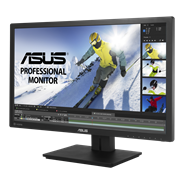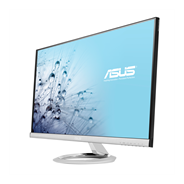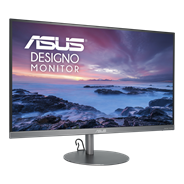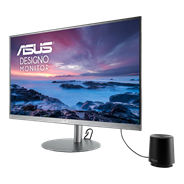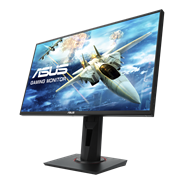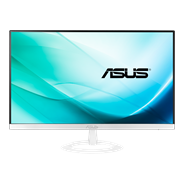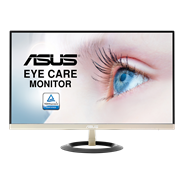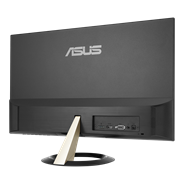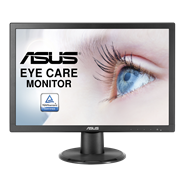ASUS Vivobook S 16 Flip OLED
Wherever flexibility takes you

World-leading 16” 3.2K OLED display
Windows 11 Pro
anti-fingerprint coating
ASUS ErgoSense keyboard
PERFORMANCE
Fulfil your ambitions
CPU
Boost your productivity
THERMAL
Cooler, quieter and faster!
DISPLAY
A vision of greatness
Exhilarating OLED displays
Make it personal, ASUS Splendid
Corning® Gorilla® Glass
DESIGN HIGHLIGHT
Match your style
Cool Silver
Midnight Black
USER EXPERIENCE
Thoughtful design
Your hygiene, our priority
Perfect brightness and color tone!
ErgoSense keyboard, comfortable typing experience
Dedicated function keys
One touch login
Pencil drawing, on a laptop
BATTERY
Boundless energy
SMART CONFERENCING
AI camera and audio system
Best online meeting experience
Hear and be heard clearly
CONNECTIVITY
Empowering connections
Support fast data transfer
Support 4K 60Hz display
AUDIO
Break the sound barrier
Always in the best listening spot
Maximum possible volume
MILITARY-GRADE
World’s most strictly tested US military-grade laptop durability33
ENVIRONMENT
Made for the Earth. Made for you.
30% Post-Consumer Recycled (PCR) Plastics
100% Recyclable Packaging
30% More Efficient than ENERGY STAR®
SOFTWARE
Truly personalized workflow
MyASUS
GlideX
ScreenXpert for ASUS PCs
- The characteristics of an OLED display can eventually change over long periods of use, leading to visible changes. This is completely normal, and can cause behavior such as image burn-in or persistence: this means that a faint ghost of an image remains visible even when it’s replaced by a new image. These effects are more likely to occur if a non-moving (static) high-contrast image is displayed for an excessively long time. ASUS laptops with an OLED display minimize this risk by setting Windows Dark mode as default, as well as shortening the idle time before the screen is turned off — both on mains (AC) and battery (DC) power. This dual approach minimizes the potential for burn-in to maximize the lifespan of your OLED display lifespan, and also reduces unnecessary power draw for optimal battery life. We also recommended adjusting the brightness of your OLED display to complement the ambient lighting in your environment, rather than keeping the screen at maximum brightness at all times. You should also ensure that you have an animated, dark-background screensaver enabled in the Windows Settings tool.
- The devices referred to on this web page are the most highly-specified models available. Some models and configurations may not have an OLED display option. Please check the product specifications to ensure that the correct type of display is configured before purchasing in-store or online.
- Average test results: Delta E < 1.5, +/- 0.5. Over time, the Delta E value of the display may change. It is recommended to recalibrate the color to ensure color accuracy.
- Maximum RAM capacity may vary according to device configuration.
- Fast Charging Technology is tested while the device is powered off with the default adapter included with the device. Charging time may vary +/- 10% due to system tolerance.
- The testing regime includes the requirements of both military-grade standards and ASUS quality tests, and varies depending on device. MIL-STD-810 testing is conducted on selected ASUS products only. Note that the MIL-STD-810 testing helps to ensure the quality of ASUS products but does not indicate a particular fitness for military use. The test is performed under laboratory conditions. Any damage caused by attempts to replicate these test conditions would be considered accidental, and would not be covered by the standard ASUS warranty. Additional coverage is available with ASUS Premium Care.
- Product weight may vary according to device configuration.
- The color-temperature-adjustment feature is available with OLED models only.
- Clinical testing using the ISO 22196 standard protocol proved that viral and bacterial growth were inhibited by 99% over a 24-hour period. A 99% reduction in potentially harmful microorganisms is defined as the number of viruses and bacteria on the surface dropping from 1,000,000 (cfu/ml) to 100 (cfu/ml).
- The figures are based on theoretical performance. Actual performance may vary in real-world situations.
- Maximum SSD capacity may vary according to device configuration.
- WiFi 6E availability may vary by country and their specific regulations. Feature only supported by Windows 11 or later.
- 802.11ax 2x2 160 MHz enables 2402 Mbps maximum theoretical data rate, ~3x faster than standard 802.11ac 2x2 80 MHz (867 Mbps) and nearly 6x faster than baseline 1x1ac (433 Mbps) Wi-Fi as documented in IEEE 802.11 wireless standard specifications, and require the use of similarly configured 802.11ax wireless network routers.
- This amendment defines standardized modifications to both the IEEE 802.11 physical layers (PHY) and the IEEE 802.11 Medium Access Control layer (MAC) that enable at least one mode of operation capable of supporting at least four times improvement in the average throughput per station (measured at the MAC data service access point) in a dense deployment scenario, while maintaining or improving the power efficiency per station. For additional details visit: https://mentor.ieee.org/802.11/dcn/14/11-14-0165-01-0hew-802-11-hew-sg-proposed-par.docx
- “Up to 75% lower latency” is based on Intel simulation data of 802.11ax with and without OFDMA using 9 clients. Average latency without OFDM is 36 ms, with OFDMA average latency is reduced to 7.6 ms. Latency improvement requires that the AP and all clients support OFDMA.
- The component placement is for reference only, and may vary by model and configuration.
- Compared to average LCD displays in the market, measuring energy emission of blue light in between 415-455 nm wavelength.
- Compared to average LCD laptop panel. Average LCD display has 10 ms response time.
- Testing done on discrete parts, using soda-lime glass as comparative reference. Figures and tests provided by Corning.
- Fingerprint sensor on power button is optional.
- ASUS Pen 2.0 is optional. The availability and warranty for the stylus vary according to country and territory. Please check with your local ASUS retailer for details.
- ISO 21702 specifies proper methods for measuring antiviral activity on plastics and other non-porous surfaces of antiviral-treated products. Test Viruses used in this International Standard are as follows: Influenza: An enveloped virus known to cause respiratory tract infection in humans. Feline calicivirus: A non-enveloped virus used in place of noroviruses known to cause enteric pathogens due to similar biological properties.
- ISO 22196:2011 specifies a method of evaluating the antibacterial activity of antibacterial-treated plastics, and other non-porous, surfaces of products (including intermediate products).
- COVID-19, H3N2, H1N1, E. coli and Staphylococcus tests were performed by independent third-party laboratories: Boken Quality Evaluation Institute, Japan Textile Products Quality and Technology Center, and National Defense Medical Center.
- Antimicrobial treatments are manufactured by Co-Action Corporation.
- The Federal Insecticide, Fungicide, and Rodenticide Act (FIFRA) is the Federal statute that governs the registration, distribution, sale, and use of pesticides in the United States.
- The Biocidal Products Regulation (BPR, Regulation (EU) 528/2012) concerns the placing on the market and use of biocidal products, which are used to protect humans, animals, materials or articles against harmful organisms like pests or bacteria, by the action of the active substances contained in the biocidal product.
- Note that the protective effects of ASUS Antibacterial Guard were tested by ASUS on April 26, 2021, and follow the ISO 22196 method on our specially-treated test samples. The tests provide a simulation of three years of wear and tear, and include exposure to salt spray, thermal shocks, and both alcohol and wool-felt tests. Actual effective antibacterial-protection period may vary depending on product configuration and usage.
- As of 22 August 2022, refer to WHO Coronavirus (COVID-19) Dashboard. https://covid19.who.int/
- Learn more: https://www.cdc.gov/flu/about/viruses/index.htm
- Learn more: https://www.cdc.gov/ecoli/ecoli-prevention.html
- The actual composition of ASUS Antimicrobial Guard Plus may vary.
- ASUS Antimicrobial Technology is applied to the laptop areas that users touch most frequently. ASUS Antimicrobial Guard Plus is applied to the palm rest area and keyboard . ASUS Antimicrobial Guard is applied to the power button/fingerprint sensor and touchpad. A sticker on the laptop will help to identify the device is covered by Antimicrobial Guard Plus or Antimicrobial Guard due to different spec configuration.
- ASUS Antimicrobial Guard is applied to the laptop areas that users touch most frequently, including keyboard, the palm rest area, the power button/fingerprint sensor and touchpad. A sticker on the laptop will help to identify the device is covered by Antimicrobial Guard due to different spec configuration.
- Selected products are tested using enhanced military-grade MIL-STD-810H durability standards, with 12 test methods and 26 test procedures, to ensure extraordinary toughness. Based on ASUS internal market research using available information and testing reports from main laptop brand websites on Oct 28, 2022, ASUS consumer laptops use a regime consisting of 26 test procedures, which is the consumer laptop industry’s strictest and most extensive test regime for the MIL-STD-810H standard.
- EPEAT registered where applicable. EPEAT registration varies by country. See www.epeat.net for registration status by country.
- Percentage varies according to device configuration.













